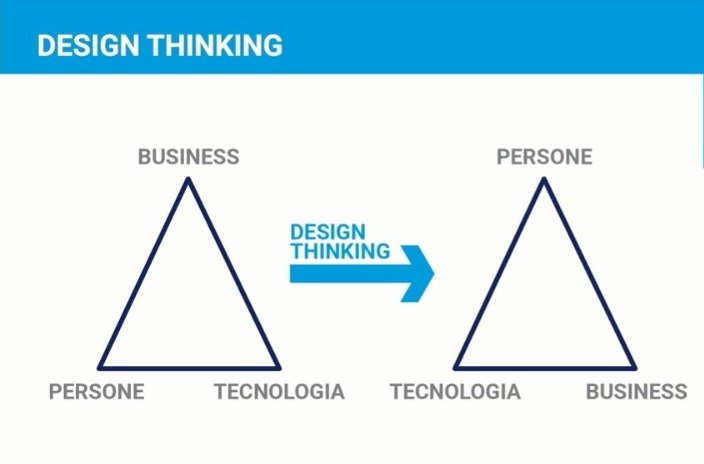Introduction
One of the fundamental steps in implementing an entrepreneurial initiative is to be able to identify the needs of customers and relate them to the value the company can offer to best satisfy them. A useful tool for this is the approach suggested by Design Thinking.
Definition of Design Thinking
The term Design Thinking was coined by the designer Rolf Faste in the 1980s, but its use for management purposes is due to his colleague David M. Kelley, around the 2000s at Stanford.
DT is a process for generating innovations focused on the in-depth understanding of people's needs, leveraging approaches and methodologies typical of design. Why design? Because the designer adopts a creative process starting from a problem, the solution to which is unknown, and arrives at the development of a creative and original idea that perfectly meets the identified need.
Fundamentals of Design Thinking
The perspective on which it is based is reversing the classic triangle with the top vertex the business and the basis of people and technology. Following this logic, the objective of the enterprise lies in the use of innovation to create business value for stakeholders through products that meet people's needs through the use of technology. Instead, DT places people at the top. This overturning makes it possible to start from people's problems to create value for end users through products/services that satisfy them. Business is therefore the natural consequence of this people-centred process.

The aim of the DT is to create empathy with the customer, because you design for someone and you do it with an agile method to identify an innovative solution that meets the three criteria of desirability by the market, technological, technical and organisational feasibility and economic viability.

The Stanford D-School model
The model analysed was developed by The Hasso Plattner Institute of Design at Stanford, commonly known as d.school. This process consists of five steps.
The initial phase exploratory (Empathise) plans to enter empathy with the recipients, get to know the objectives of the people involved in the project and obtain insight on their needs. This requires observe users and their behaviour in the reference context, interact with them through meetings and interviews and get involved trying out user experiences. A useful tool at this stage is the use of a Empathy mapto synthesise the customer's information and define sufferings and needs.We then go on to summarise and definition of the problem to be solved (Define). This phase helps trace a specific direction, which identifies the vision of the project. The insights gained in the exploration phase flow into the creation of representative sentences able to synthesise the needs expressed by the user. A useful tool to implement this phase is the use of Personasi.e. fictional characters conceived from the synthesis of observed behaviour among customers capable of representing the motivations, desires, expectations and needs of broader groups of users.
In the phase of conception (Ideate) a large quantity of innovative solutions to the defined problem. It proceeds in a way iterative which starts with a first phase of divergence (when you have to create as many ideas as possible) and a second of convergence (when choices have to be made). Ideas are defined, evaluated, improved and finally integrated in a final concept that is rich, detailed and representative of multiple perspectives.
In the phase of implementation (Prototype and Test), the best ideas generated during the previous phase are materialised in a series of prototypes (from the Greek πρωτότυπος 'first form') that enable ideas to be transformed into tangible 'raw' products/services. These are tested to receive feedback and refine the initial idea through successive iterations to develop the final product/service that best meets market needs.

Other models
There are different models of Design Thinking (IDEO toolkit, Stanford D-School, Double Diamond), but they are all united by an iterative process consisting of three macro-phases:
- observation, listening and research leading to the definition of a problem;
- conception, where the aim is to proliferate different ideas and imagine alternative solutions to the same problem;
- creation of 'demonstrators' of the idea to be tested and evaluated.






